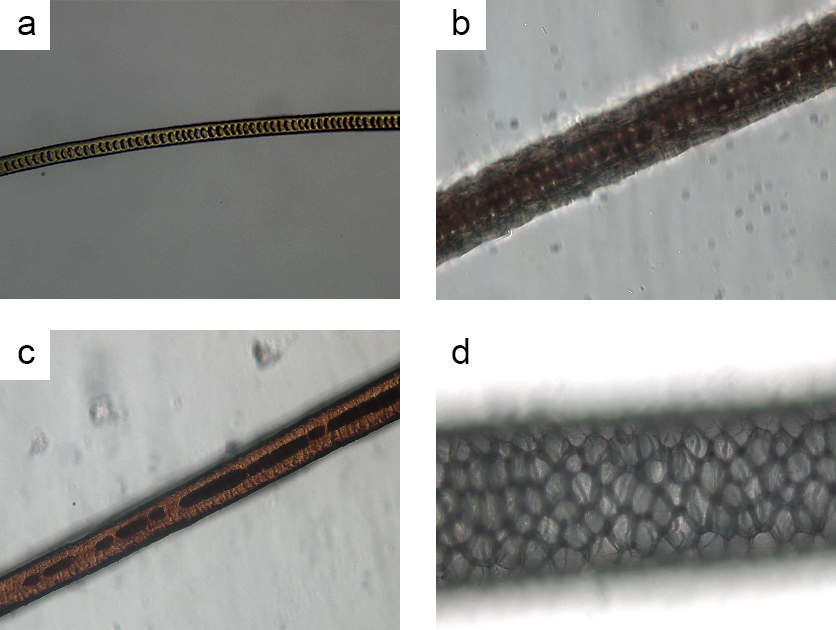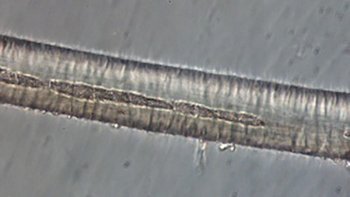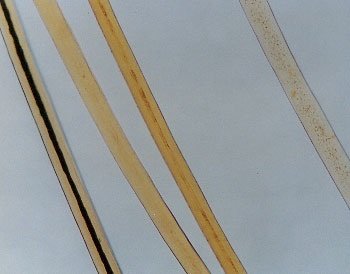
Designed Distinctions in a Single Strand of Hair
Why, even the hairs of your head are all numbered. Fear not; you are of more value than many sparrows (Luke 12:7).
Introduction
Hairs are one of the most common biological pieces of evidence found at crime scenes. On average, one human scalp contains between 80,000 and 100,000 hairs,1 and humans shed an average of 100 hairs per day.2 One amazing feature of forensic hair analysis is the hidden secrets revealed through the lens of a microscope. A quick microscopic examination can determine if the hair is of human or animal origin and directly confirms the creation account described in Genesis 1.
“Kinds” of Hair
Genesis 1 describes the creation of animals “according to their kind.” What is a kind? A kind represents the reproductive boundary of living things. Therefore, the offspring of living things is always the same kind as its parents, even when there is visible variation.
Each animal kind exhibits observable traits that distinguish them from every other animal family.
Based on these descriptions in the Bible, there should be observable differences in the created kinds. And though obvious differences exist on the macro level, they are also visible on the micro level in something as simple as a single strand of fur. Each animal kind (or family level in biological taxonomy) exhibits observable traits that distinguish them from every other animal family.
A forensic analyst can observe a hair sample and quickly determine whether it is of human or animal origin, as well as which animal family it is from. Both the scale and medulla patterns provide clues into the source of hair or fur sample.
Animals’ medulla patterns help to differentiate between animal kinds. Some animals have intricate repeating patterns in their medulla and others continuous or fragmented. One of the primary differences between animals and humans is the width of the medulla (see Table 1). The medulla of a cat will resemble a stack of dinner plates (see figure 1a), while a dog’s looks like small blocks stacked together (see figure 1b). A horse has a mosaic pattern (see figure 1c), and a deer has a fur pattern that resembles reptile scales under the microscope (see figure 1d).

Fig. 1. (a) Cat fur, (b) Dog fur, (c) Horse fur, (d) Deer fur. Image credit: Dr. Jennifer Hall Rivera
Primates’ fur samples are clearly different from that of a human (see figure 2). We would expect these differences since God created humans in his image (Genesis 1:26–27). Human hair is clearly set apart from the animal kingdom.


Fig. 2. (Top) Primate fur, Image credit: Dr. Jennifer Hall Rivera; (Bottom) Human hairs, Image credit: FBI.3
Evolutionists claim that since animals and humans are both covered with “hair,” there is common ancestry in the past, but there are clear observational differences. God uniquely designed human hair with different characteristics, as well as overall function, when compared to animal fur.
Table 1.
| Human Hair | Animal Fur | |
|---|---|---|
| Growth | Grows continuously, independently, and replaces in a mosaic pattern unrelated to a season. | Growth stops and is synchronized by season. |
| Overall Diameter | Thinner | Wider |
| Medulla (Medullary index) |
Thinner < ⅓ |
Wider > ½ |
| Melanin Distribution | Consistent color and dense near the follicle | Abrupt color change or “banding” with density near the medulla |
| Root Shape | Club shaped | Varies by animal kind |
| Scale Pattern | Imbricate | Varies by animal kind but mostly spinous or coronal |
| Texture | Soft and potential to grow long | Coarse and generally short in length |
| Temperature Regulation | No ability to regulate temperature | Regulates temperature |
The unique characteristics of human hair in contrast to animal fur patterns within their created kinds confirm the truth of God’s Word from the very first chapter in Genesis.
The unique characteristics of human hair in contrast to animal fur patterns within their created kinds confirm the truth of God’s Word from the very first chapter in Genesis. And you are so valuable to God, that at every moment in your life, he knows the exact number of hairs on your head into the tens of thousands. This is one more example of God’s amazing devotion and attention to his creation.
Footnotes
- Kiierr International, “Hair Anatomy: Everything You Need to Know,” Kiierr, November 9, 2020, https://kiierr.com/hair-anatomy-everything-you-need-to-know/.
- Douglas W. Deedrick, “Part 1: Hair Evidence,” Forensic Science Communications 2, no. 3 (July 2000), https://archives.fbi.gov/archives/about-us/lab/forensic-science-communications/fsc/july2000/deedric1.htm.
- Douglas W. Deedrick and Sandra L. Koch , “Microscopy of Hair Part 1: A Practical Guide and Manual for Human Hairs,” Forensic Science Communications 6, no. 1 (January 2004).
Recommended Resources

Answers in Genesis is an apologetics ministry, dedicated to helping Christians defend their faith and proclaim the good news of Jesus Christ.
- Customer Service 800.778.3390
- © 2024 Answers in Genesis







